[Gardening Diary] Sowing of native cyclamen
Cyclamen (also known as Sowbread ) is a perennial tuberous plant in the Primulaceae family, subfamily Myrsinaceae, encompassing over 20 species . The genus name, " Cyclamen ," comes from Medieval Latin ( " Cyclamnos " in Classical Latin ) , meaning " circle ," referring to the cyclamen's round tubers. "Xian Ke Lai" in Chinese is a clever transliteration, meaning "the cyclamen has come gracefully." Cyclamen is native to the Mediterranean region, Africa, Europe, and Somalia (where there is only one species: Cyclamen somalense ). It primarily thrives in semi-shaded areas without direct sunlight beneath shrublands, broad-leaved forests, and mixed coniferous and broad-leaved forests. It grows between tree roots and rocks. Winter leaves and dead leaves provide the plant with its best protection from the cold and are its primary source of nutrition. Most original species are frost-resistant, such as European cyclamen ( Cyclamen purpurascens ), ivy-leaf cyclamen ( Cyclamen hederifolium ), and small-flowered cyclamen ( Cyclamen coum ). The rest can only tolerate short periods of cold, but have good heat resistance, such as African cyclamen ( Cyclamen africanum ), cyclamen ( Cyclamen persicum : the ancestor of the most popular and best-selling large-flowered garden species on the market), and geranium-leaf cyclamen ( Cyclamen rohlfsianum ).
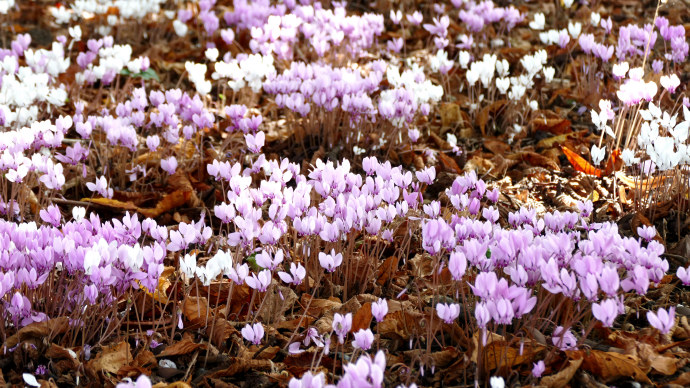
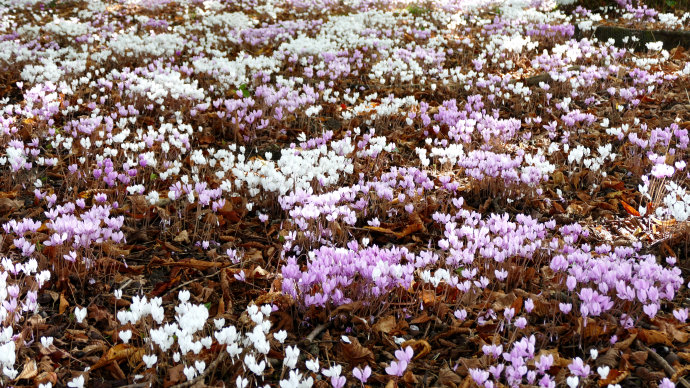
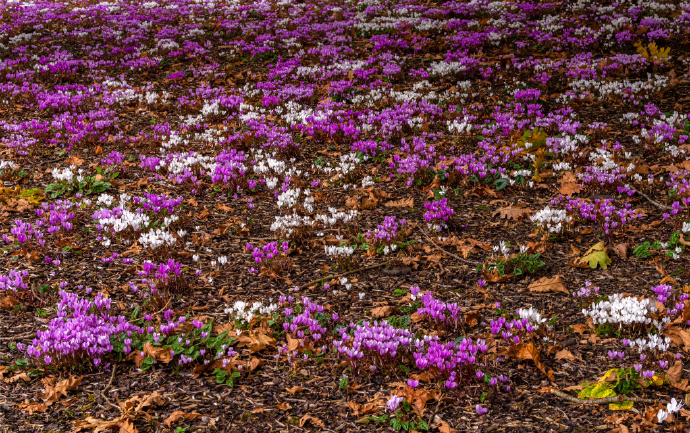 Cyclamen plants primarily propagate by seed. Remove seeds from pods when they soften, place them in a paper bag, and store them dry and refrigerated at around 5 °C (not frozen) . This will maximize germination rates until sowing at room temperature in the fall. ( Cyclamen purpurascens seeds require vernalization, similar to high-altitude sowing; they will not germinate at room temperature.) Some species, such as Cyclamen purpurascens and Cyclamen parviflorum , quickly and completely lose their viability due to desiccation. These should be kept moist and refrigerated (spray the heat-sterilized planting material with a little water, wrap the seeds, and seal them in a ziplock bag). Before sowing, soak the seeds in a stimulating agent such as gibberellin or brassinolide for 24 hours. Cold water is usually sufficient. Most native species originate from high-altitude regions and do not require traditional warm water soaking. Change the water once during the soaking period. Gently massage the seeds to remove starch, sugars, and other substances that inhibit germination before sowing. The longer the storage time, the longer the germination time, typically one year, but can take up to four to five years. Cold-tolerant varieties can be sown directly in a suitable garden location (shade, under shrubs, or in the shade under buildings). Rare or cold-sensitive varieties should be potted in a naturally controlled microclimate. After sowing, cover with 1 cm of soil or fine-grained gravel (this will control the growth of moss and insects). Place the pot in a cool, dark location and cover with a lid to keep it moist. (Natural light can affect germination rates; experiments have shown that artificial light does not have this problem.) The optimal temperature for germination is 10-16 ° C . Above 20°C , germination essentially ceases (heat-tolerant varieties can reach up to 25°C ). Most varieties germinate in 3-5 weeks (watch for 1-2 years before repotting). After the seed sends out its first root, the first young leaf will emerge. A small tuber, several millimeters long, will quickly form from this root. Do not repot for 12-18 months, as breaking the root will cause stagnation. Seedlings can be transplanted when there are three to four true leaves and contact between the tuber . Maintain a cool and humid environment in the first summer, and the seedlings will continue to grow instead of dormant. The extra 6 months of growth period will allow the seedlings to bloom early. The suitable temperature for day and night growth is 10 to 21°C . It takes 18 months to 3 years from sowing to flowering .
Cyclamen plants primarily propagate by seed. Remove seeds from pods when they soften, place them in a paper bag, and store them dry and refrigerated at around 5 °C (not frozen) . This will maximize germination rates until sowing at room temperature in the fall. ( Cyclamen purpurascens seeds require vernalization, similar to high-altitude sowing; they will not germinate at room temperature.) Some species, such as Cyclamen purpurascens and Cyclamen parviflorum , quickly and completely lose their viability due to desiccation. These should be kept moist and refrigerated (spray the heat-sterilized planting material with a little water, wrap the seeds, and seal them in a ziplock bag). Before sowing, soak the seeds in a stimulating agent such as gibberellin or brassinolide for 24 hours. Cold water is usually sufficient. Most native species originate from high-altitude regions and do not require traditional warm water soaking. Change the water once during the soaking period. Gently massage the seeds to remove starch, sugars, and other substances that inhibit germination before sowing. The longer the storage time, the longer the germination time, typically one year, but can take up to four to five years. Cold-tolerant varieties can be sown directly in a suitable garden location (shade, under shrubs, or in the shade under buildings). Rare or cold-sensitive varieties should be potted in a naturally controlled microclimate. After sowing, cover with 1 cm of soil or fine-grained gravel (this will control the growth of moss and insects). Place the pot in a cool, dark location and cover with a lid to keep it moist. (Natural light can affect germination rates; experiments have shown that artificial light does not have this problem.) The optimal temperature for germination is 10-16 ° C . Above 20°C , germination essentially ceases (heat-tolerant varieties can reach up to 25°C ). Most varieties germinate in 3-5 weeks (watch for 1-2 years before repotting). After the seed sends out its first root, the first young leaf will emerge. A small tuber, several millimeters long, will quickly form from this root. Do not repot for 12-18 months, as breaking the root will cause stagnation. Seedlings can be transplanted when there are three to four true leaves and contact between the tuber . Maintain a cool and humid environment in the first summer, and the seedlings will continue to grow instead of dormant. The extra 6 months of growth period will allow the seedlings to bloom early. The suitable temperature for day and night growth is 10 to 21°C . It takes 18 months to 3 years from sowing to flowering .
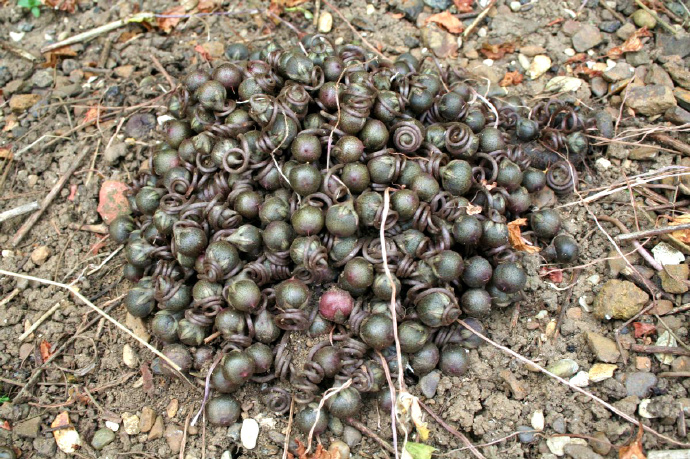
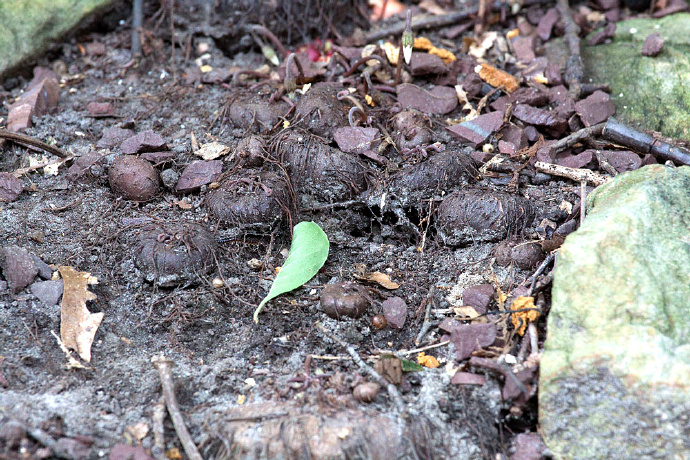
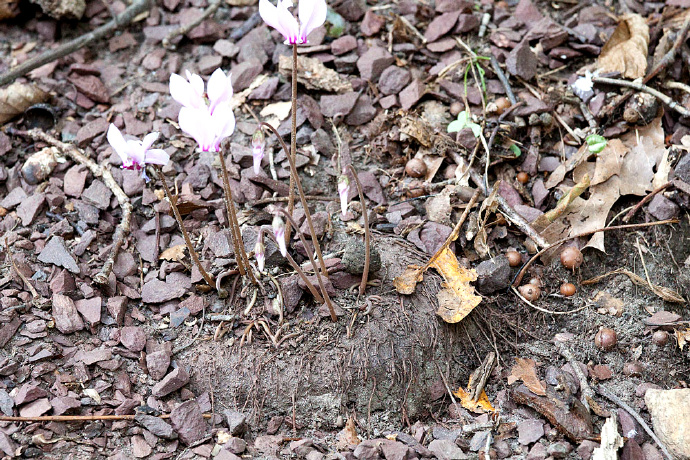 One-year seedlings sown under air conditioning without dormancy are theoretically equivalent to two-year seedlings sown under normal temperature with summer dormancy. The first year of dormancy is particularly dangerous for seedlings. During the first growing season, the tubers remain small and are prone to shriveling and withering. The second growing season is spent recovering from summer losses before accumulating energy until flowering and maturity. Therefore, two-year seedlings grown under normal temperature are not necessarily superior to one-year seedlings grown under air conditioning. In reality, one-year seedlings grown under air conditioning are equivalent to two and a half growing seasons at normal temperature combined, allowing for the highly efficient planting in the autumn of the current year and flowering and even seeding in the autumn of the following year. After reaching adulthood, they can undergo normal dormancy. Most native cyclamen sown with leaf markings vary (each individual is unique). Seedlings have a 30% to 50% chance of successfully replicating the characteristics of the parent plant. Individuals with too many characteristics are more difficult to replicate successfully, while individuals with moderate performance are more likely to reach higher levels.
One-year seedlings sown under air conditioning without dormancy are theoretically equivalent to two-year seedlings sown under normal temperature with summer dormancy. The first year of dormancy is particularly dangerous for seedlings. During the first growing season, the tubers remain small and are prone to shriveling and withering. The second growing season is spent recovering from summer losses before accumulating energy until flowering and maturity. Therefore, two-year seedlings grown under normal temperature are not necessarily superior to one-year seedlings grown under air conditioning. In reality, one-year seedlings grown under air conditioning are equivalent to two and a half growing seasons at normal temperature combined, allowing for the highly efficient planting in the autumn of the current year and flowering and even seeding in the autumn of the following year. After reaching adulthood, they can undergo normal dormancy. Most native cyclamen sown with leaf markings vary (each individual is unique). Seedlings have a 30% to 50% chance of successfully replicating the characteristics of the parent plant. Individuals with too many characteristics are more difficult to replicate successfully, while individuals with moderate performance are more likely to reach higher levels.
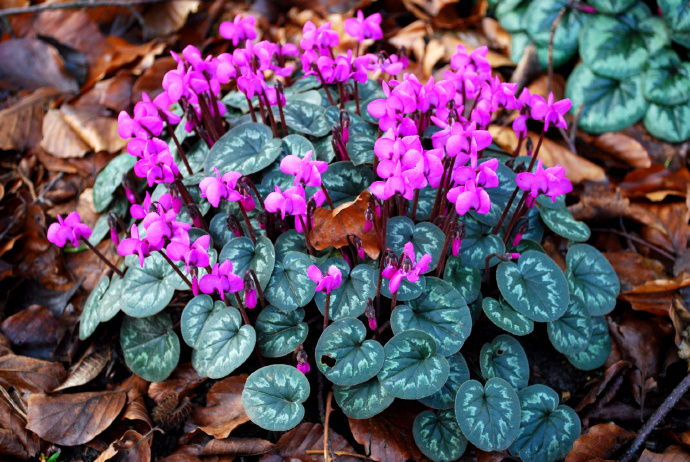
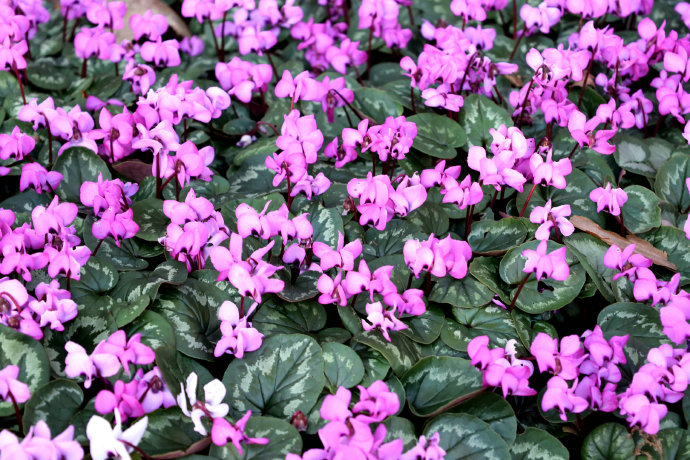
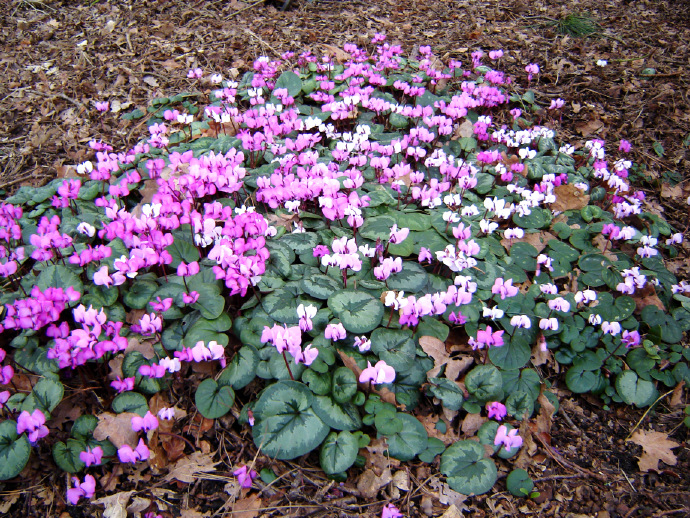 Native cyclamen are actually subalpine species. The main Mediterranean production areas are located in mountainous areas around 2,000 meters above sea level , while other lower-elevation production areas are located at higher latitudes. Regardless of whether they are cold-tolerant (most) or not (some are relatively heat-tolerant but quite cold-sensitive), native cyclamen all go dormant during summer. Cyclamen have limited drought tolerance and cannot be dried and stored like small bulbs during dormancy (excessive shriveling equals death). Reduce watering after the leaves turn yellow in late spring and early summer, and water them moderately until the soil is completely dry to prevent the tubers from shrunken (excessive watering can easily cause rot, while large bulbs are more drought-tolerant). This is why imported bare bulbs are difficult to restore.
Native cyclamen are actually subalpine species. The main Mediterranean production areas are located in mountainous areas around 2,000 meters above sea level , while other lower-elevation production areas are located at higher latitudes. Regardless of whether they are cold-tolerant (most) or not (some are relatively heat-tolerant but quite cold-sensitive), native cyclamen all go dormant during summer. Cyclamen have limited drought tolerance and cannot be dried and stored like small bulbs during dormancy (excessive shriveling equals death). Reduce watering after the leaves turn yellow in late spring and early summer, and water them moderately until the soil is completely dry to prevent the tubers from shrunken (excessive watering can easily cause rot, while large bulbs are more drought-tolerant). This is why imported bare bulbs are difficult to restore.
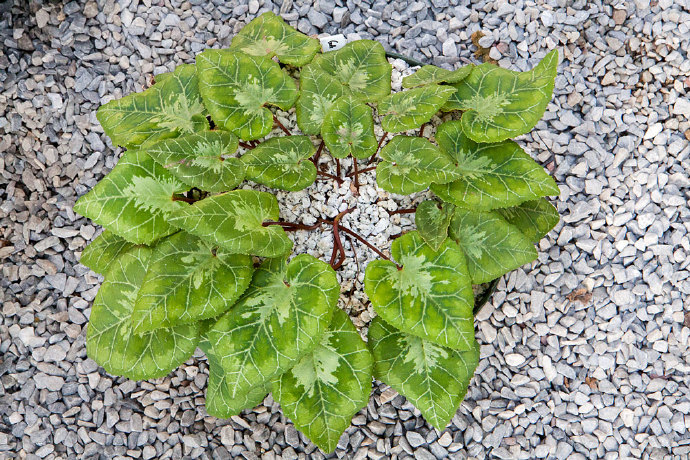
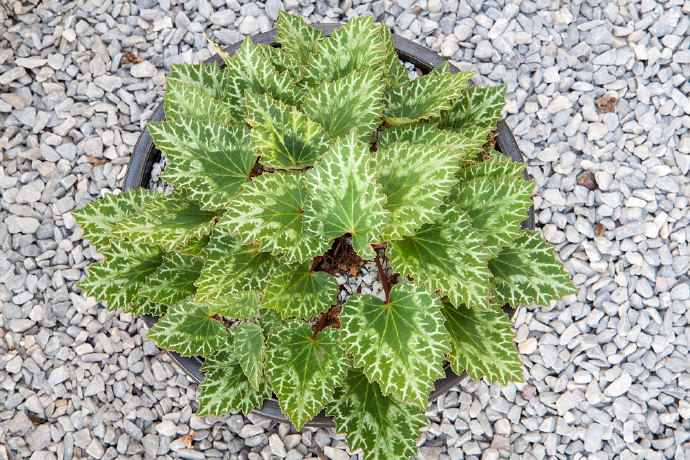
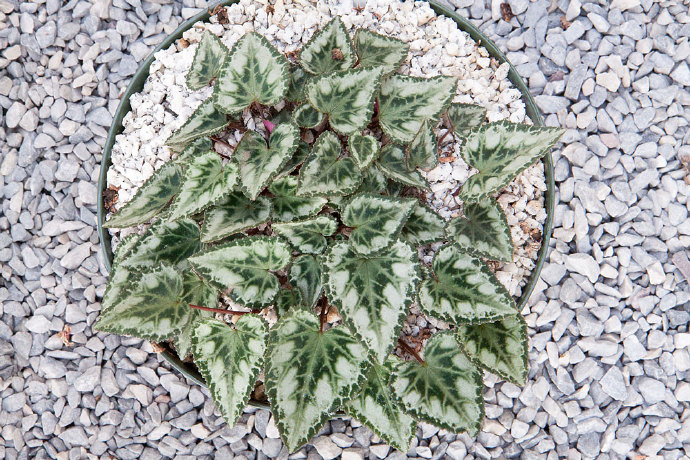
 We recommend growing native cyclamen because the horticultural varieties sold in flower markets have limited leaf variety and are over-medicated to boost yields. Once they leave their highly controlled environments and enter the home, they are prone to rotting (for medicine jars, your home is a wild environment). Cyclamen persicum is one of the most popular and best-selling horticultural varieties (it holds a dominant position). Among native cyclamen, both its tubers and flowers are large, and it's one of the few native cyclamen that isn't cold-tolerant. This is why you often associate cyclamen with cold and heat sensitivity and rotting easily. In reality, most native cyclamen are cold-tolerant, slow-growing, and highly resistant to stress.
We recommend growing native cyclamen because the horticultural varieties sold in flower markets have limited leaf variety and are over-medicated to boost yields. Once they leave their highly controlled environments and enter the home, they are prone to rotting (for medicine jars, your home is a wild environment). Cyclamen persicum is one of the most popular and best-selling horticultural varieties (it holds a dominant position). Among native cyclamen, both its tubers and flowers are large, and it's one of the few native cyclamen that isn't cold-tolerant. This is why you often associate cyclamen with cold and heat sensitivity and rotting easily. In reality, most native cyclamen are cold-tolerant, slow-growing, and highly resistant to stress.
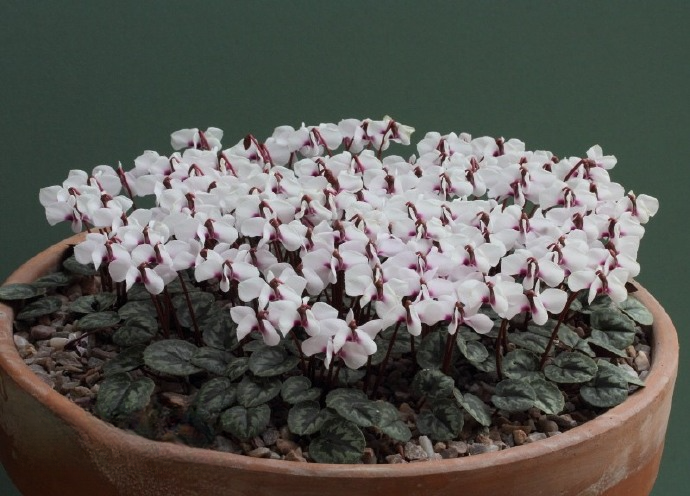
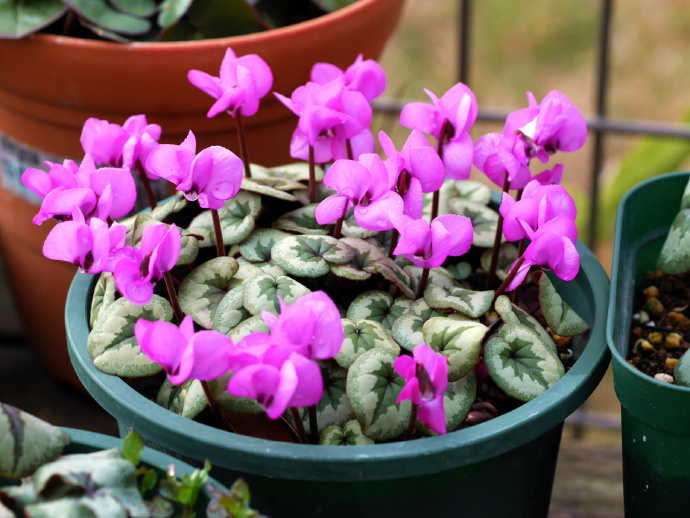

Related blog posts:
Seeding of alpine species
http://blog.sina.com.cn/s/blog_615d80a70102xegs.html
Reasonable application of vitality agents and fungicides on bare-root plants
http://blog.sina.com.cn/s/blog_615d80a70102x2wr.html
Effects of plant material acidity and alkalinity on plants (the role of limestone)
http://blog.sina.com.cn/s/blog_615d80a70102x2tk.html
Application of the potting method in rock species
http://blog.sina.com.cn/s/blog_615d80a70102xba7.html
Alpine Plant Home Care Equipment Strategy
http://blog.sina.com.cn/s/blog_615d80a70102wn47.html